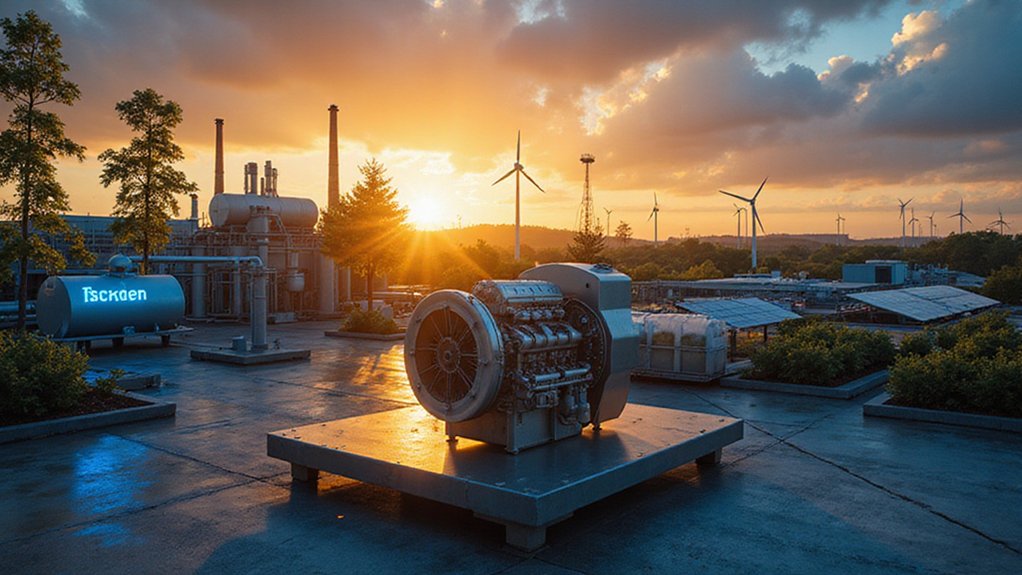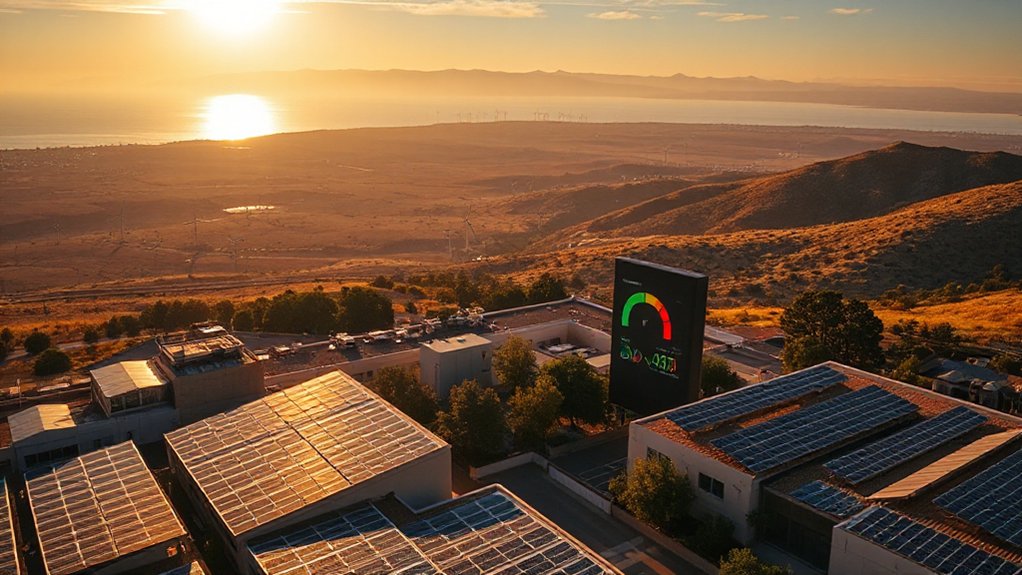Engineers at UIC just hit 35% efficiency turning sunlight and farm waste into hydrogen fuel, making fossil fuel companies nervous. The breakthrough uses photoelectrochemical methods that split water without emissions, while traditional hydrogen production belches CO₂. Some new techniques slash energy needs by 600%, with companies like SunHydrogen creating panels that work with seawater. Big Oil’s grip on the 70 million ton hydrogen market looks shaky. The energy game’s about to change completely.
The energy industry’s latest obsession? Solar hydrogen production that’s about to flip the script on how we power everything. Engineers at UIC just dropped a bombshell – their new method converts solar power and agricultural waste into hydrogen with 35% efficiency. That’s a record-setting number that has fossil fuel executives sweating bullets.
Here’s the thing. Traditional hydrogen production relies on natural gas steam reforming, which belches out carbon dioxide like there’s no tomorrow. But these new solar-driven processes? They’re clean. Photoelectrochemical methods use sunlight to split water into hydrogen and oxygen. No fossil fuels. No emissions. Just pure energy potential.
The stats are wild. Some methods slash the energy needed for hydrogen extraction by 600%. Companies like SunHydrogen are developing panels that generate hydrogen directly from sunlight and literally any water source. Even seawater works. Meanwhile, SolarMarine Energy floats their systems on coastal waters, turning ocean surfaces into hydrogen factories.
Ocean surfaces becoming hydrogen factories while slashing extraction energy by 600% – the future is floating right in front of us.
When hydrogen powers a fuel cell, the only byproducts are water vapor and warm air. That’s it. Compare that to coal plants or natural gas facilities. The difference is stark.
But let’s be real – challenges exist. Hydrogen packs serious energy by weight but takes up massive space. Storage and transport remain engineering nightmares. Fuel cell technology? Still crawling toward maturity. Most hydrogen production today still depends on fossil fuels because change is expensive and slow. Currently, 70 million tons of hydrogen are produced annually worldwide, with the vast majority coming from fossil fuel sources.
The economics tell an interesting story though. Solar electricity costs keep plummeting, making green hydrogen increasingly viable. Excess renewable energy gets converted to hydrogen instead of being wasted. Multi-gigawatt projects are already scheduled through 2028. Revenue streams multiply across fuel cell vehicles, petrochemicals, and industrial applications. The breakthrough uses cow dung biochar to reduce the voltage required for water electrolysis to just a fifth of a volt.
Even the waste CO₂ from certain processes finds buyers in beverage and chemical manufacturing. Nothing goes to waste anymore.
Solar hydrogen addresses renewable energy’s biggest headache – intermittency. Store hydrogen when the sun shines. Release it when clouds roll in. Simple concept, complex execution. But with efficiency gains like UIC’s breakthrough, the energy industry’s status quo looks increasingly fragile. The growing solar capacity worldwide, which reached 843 GW in 2022, provides an enormous opportunity to expand hydrogen production using sustainable methods.









